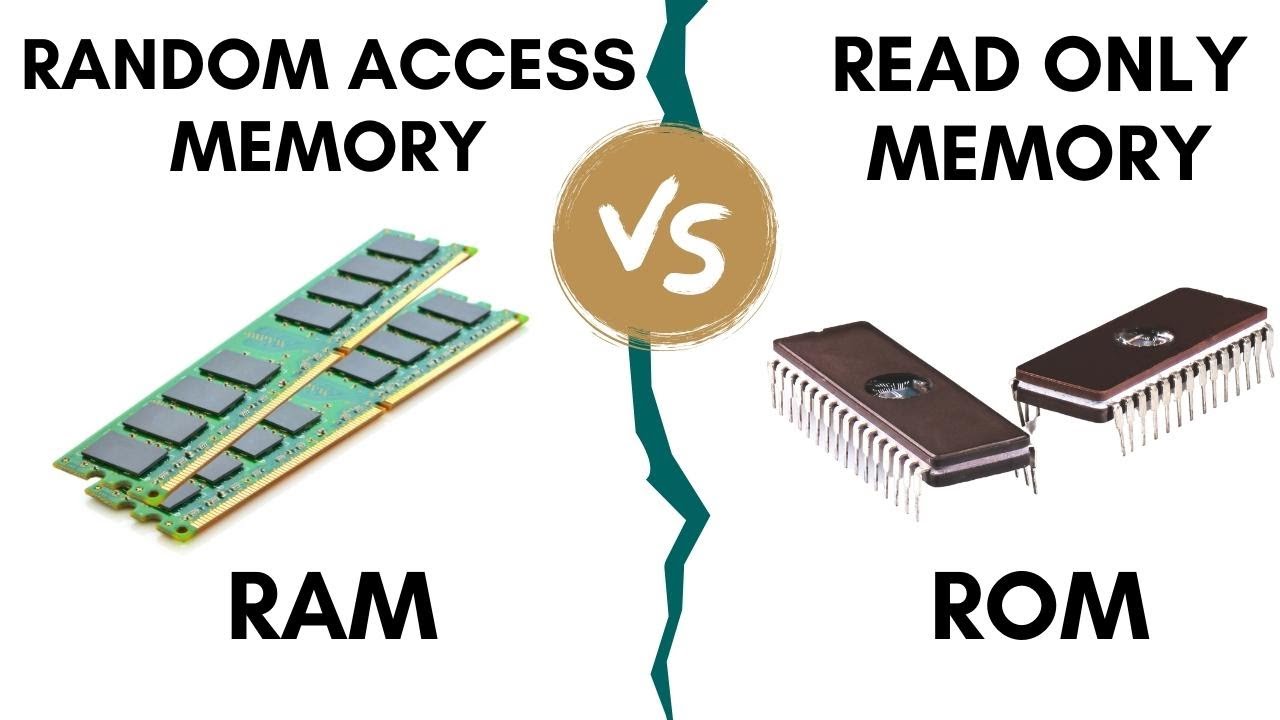In this digital age, we often encounter terms like RAM and ROM when discussing our computers and electronic devices. While these acronyms are familiar, not everyone truly understands the fundamental distinctions between RAM (Random Access Memory) and ROM (Read-Only Memory). In this article, we will delve into these crucial components of electronic memory and clarify their roles, characteristics, and importance in the world of technology.
Introduction
What is RAM and ROM?
To comprehend the difference between RAM and ROM, it’s crucial to first understand what each term stands for:
RAM (Random Access Memory): RAM is a type of volatile memory that temporarily stores data that the computer is actively using. It allows the CPU (Central Processing Unit) to access this data quickly and efficiently.
ROM (Read-Only Memory): ROM, on the other hand, is a type of non-volatile memory that stores data that cannot be easily modified or overwritten. It retain the data even when the device is powered off.
RAM Explained

Understanding Random Access Memory
Random Access Memory, or RAM, is like a temporary workspace for your device. When you open an application or a file, the data needed for that task is loaded into the RAM for quick access. The more RAM your device has, the more applications and data it can handle simultaneously.
How Does RAM Work?
RAM stores data in electronic chips that are constantly powered. When the device is turned off or restarted, the data in RAM is wiped clean. This temporary nature of RAM makes it ideal for storing data that needs to be accessed quickly but doesn’t need to be saved long-term.
ROM Unveiled

Exploring Read-Only Memory
Read-Only Memory, or ROM, is different from RAM in that it retains data even when the power source is disconnected. This makes ROM ideal for storing essential instructions that need to remain intact.
Types of ROM
There are various types of ROM, including PROM (Programmable Read-Only Memory), EPROM (Erasable Programmable Read-Only Memory), and EEPROM (Electrically Erasable Programmable Read-Only Memory). These types differ in terms of how their data can be modified, with some being permanently fixed and others allowing limited reprogramming.
Key Differences
What is the difference between RAM and ROM
The difference between RAM and ROM lies in their volatility. RAM is volatile, which means its data is lost when the power is cut off. In contrast, the difference between ram and rom is that ROM is non-volatile and retains data even without power.
Usage and Applications
Where RAM Shines
RAM is crucial for the performance of your device. It directly affects how smoothly your applications run and how quickly they respond to your commands. The more RAM you have, the better your device can handle multitasking.
Practical Uses of ROM
ROM is typically used to store the firmware of your device. This includes the initial boot instructions and essential system software. It’s responsible for ensuring your device can start up and run smoothly.
Speed and Volatility
The Speed Factor
RAM is incredibly fast, as it allows the CPU to access data almost instantly. This is why tasks that require quick data retrieval, like running applications, benefit from ample RAM.
Non-Volatile ROM
ROM, being non-volatile, is slower in terms of data access compared to RAM. However, it serves a critical purpose in retaining essential data over long periods.
Can They Coexist?
How RAM and ROM Work Together
In most electronic devices, RAM and ROM work hand in hand. The difference between ram and rom is that when you power on your device, the ROM’s instructions ensure it boots up, and then the operating system and applications are loaded into RAM for quick access.
Importance in Computers
RAM’s Vital Role
In computers, RAM plays a pivotal role in ensuring smooth multitasking. If your computer has insufficient RAM, it may slow down when running multiple applications simultaneously.
The Significance of ROM
ROM is responsible for preserving the device’s essential instructions and firmware. Without ROM, your device wouldn’t know how to start up or function properly.
Making an Informed Choice
Considerations for Buyers
When purchasing a device, it’s important to consider the amount of RAM and ROM it has. Depending on your needs, you may prioritize devices with more RAM for faster performance or more ROM for enhanced storage capacity.
Future of Memory
Advancements in RAM and ROM
As technology evolves, so do RAM and ROM. Advancements in memory technology continue to make devices faster, more efficient, and capable of handling larger amounts of data.
Conclusion
In conclusion, RAM and ROM are two distinct types of memory with essential roles in the world of technology. RAM provides the speed and agility needed for seamless multitasking, while ROM preserves critical data for the proper functioning of your device. Understanding the difference between these two types of memory can help you make informed decisions when buying or using electronic devices.
Frequently Asked Questions
FAQ 1: Can I upgrade the RAM and ROM in my device?
Yes, you can often upgrade the RAM in your device, but upgrading ROM is usually more complex and may not be possible on all devices.
FAQ 2: Is RAM or ROM more important for speed?
RAM is more critical for speed, as it directly affects the device’s performance and multitasking capabilities.
FAQ 3: What happens if my ROM becomes corrupted?
If ROM becomes corrupted, your device may not start up or function properly. It’s crucial to keep ROM data intact.
FAQ 4: Why do some devices use both RAM and ROM?
Using both RAM and ROM allows devices to balance speed and data retention, ensuring optimal performance and functionality.
FAQ 5: How has memory technology evolved over the years?
Memory technology has evolved significantly, with constant improvements in both RAM and ROM to meet the demands of modern computing.









